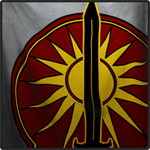Fair Warning: this argument uses a reference to the Table-Top Method of Battlemech Operation. I will make the argument that MW:O Mechs do not behave as TT Mechs, and this causes at least some balance issues.
That said, in TT all mechs use a pool of movement points for actual movement (IE: going forward and backward) and positioning (IE: turning). This means that on any given turn you can either:
- Move your full speed forward in a straight line
- Execute a turn and move less than your full speed
- The Atlas sacrifices 33% of its walking mobility to execute the turn (it has 3 MP, and requires 1 to execute the turn), or 20% of its run mobility (5 MP - 1 to execute the turn). This means that the Atlas will have a top speed of ~21.6 kph (walking) or ~43.2 kph (running).
- The Jenner sacrifices ~14% (walking) or ~9% (running) of it's mobility to execute the turn, meaning it's top speed will be 64.8 kph (walking) or 108 kph (running).
What does this have to do with MW:O? Quite simply, the slower mechs (typically Heavy/Assault mechs) have been given a huge buff in terms of mobility, which allows them to track smaller targets with more ease. Because they (they meaning slow mechs) are not forced to choose between charging forwards or turning to track a target, they're not as vulnerable at short ranges as they were in TT. It allows them to keep up with faster mechs more than they should be able to.
How can we fix this? Simply make a mech's turn speed a function of its current speed (with its current speed being a percentage of its top speed). Want to make a fast turn? Time to pump the brakes.
What would implementing this do to MW:O? It would give mobility back to the fast mechs, as they'd be able to execute reasonably fast turns while still retaining a high forward velocity. It would also mean that slow mechs are more vulnerable at shorter ranges (where they would be forced to choose between moving and manuvering).

































